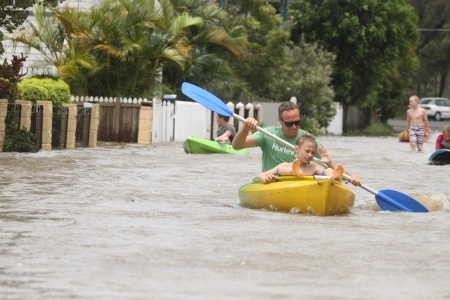Activity 6e: Economic impact of the February 2022 floods

- The direct economic cost of the floods is expected to generate a drag on real GDP growth of around ½ a percentage point in the March quarter.
- The relevant industries that were expected to experience reduced levels of activity the mining, agriculture, accommodation and food services, retail trade and construction industries.
- The floods devastated various agricultural crops, such as lettuce, apples, pears and nectarines. This caused by significant decline in farming output and resulted in agricultural producers experiencing a decline in sales revenue.
- This is because the floods, like natural disasters in general, involve reconstruction of damaged property and infrastructure which actually creates economic activity.
- these types of natural disasters can disrupt mining supplies to the extent that mining pits are flooded. In addition, cyclones and floods damage important infrastructure that is required to transport the mining resources to the nation’s ports – this includes roads, highways, rail and the ports themselves. Accordingly, this reduces the ability of miners to sell minerals on global markets.
- This would be expected to increase the labour force underutilisation rate because many of these workers will be forced to work far fewer hours then they desire. This is because it raises underemployment and the underemployment rate, which is one of the numerators in the equation used to determine the underutilisation rate.
- The construction industry stands to benefit from natural disasters because these disasters will always involve repairs and reconstruction, such as the construction or repair of roads, bridges and buildings. The costs are expected to be significantly higher than in the past due to the fact that the costs of construction/building materials has increased over recent years due to supply chain disruptions stemming from COVID-19.
